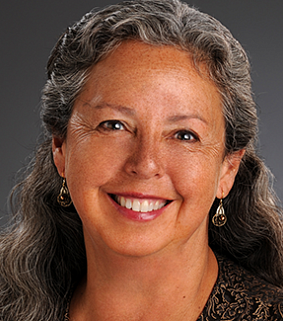2013 Hall of Achievement Inductee

It is no overstatement to say that Bobbie Conner was handed the mantle of her tribal history from the generations who came before. Her Indian name, Sísaawipam, which hearkens to a time of melting glaciers and rising water, was given to her at 13 years old by her grandmother.
It is an old name, a name evoking ancestors who have lived for thousands of years in villages along the Snake and the Columbia and their tributaries. Today, serving as the director of the Tamástslikt (Tah-mahst-slickt) Cultural Institute, Conner is the keeper of those histories. Standing at what she calls an “enormous” crossroads for the indigenous peoples of the Columbia River drainage area — as the tribes lay to rest the elders who were raised as native speakers of the languages — Conner is working to perpetuate the knowledges and histories of the Cayuse, Umatilla and Walla Walla people for the generations coming behind her.
Since joining the Institute in 1997 as chief financial officer to being named its director just four months before its opening in 1998, Conner has guided the program from the conviction that every tribal history is a compilation of family histories. It is those histories, embedded in geography, that informed the planning and implementation of the only tribally-owned interpretive center on the National Historic Oregon Trail, and also continue to serve as an organizational touchstone for Conner.
During her tenure as director, Conner has emerged as a powerful voice in the national conversation on cultural stewardship, lecturing on cultural preservation issues and creating opportunities for an up-and-coming generation of cultural activists, who work with well-known historians and authors on Tamástslikt projects. In 2012 she was named chair of the Board of Trustees at the Smithsonian’s National Museum of the American Indian.
Perhaps nothing better illustrates Conner and the Institute’s multi-layered conversation about culture, place and language than three permanent interconnected exhibits: “We Were,” “We Are” and “We Will Be.” Forgoing the museum standard of placing dates on artifacts, the Institute’s exhibits instead challenge visitors to experience the vast continuum that is Indian history.
“Who we are today is just as important as who will be tomorrow, and all of that is founded on who we were,” Conner said.
Conner, who grew up on the Umatilla Reservation near Pendleton, spent her early career in Seattle working for the United Indians of All Tribes Foundation providing technical assistance to Indian education grantees in the Pacific Northwest. In 1982 she returned to academia to earn a Master’s of Management from Willamette University. She spent the next 13 years working for the Small Business Administration in Denver, Washington D.C. and Sacramento.
She returned to her Oregon home in 1997 and has been working to depict an accurate history of the tribes of the Columbia River Basin and contribute to the tribal economy ever since.
In 2007 Conner was the recipient of the Ecotrust Indigenous Leadership Award for her work representing the Confederated Tribes of the Umatilla Indian Reservation (CTUIR) as a community and national leader, museum director, curator, speaker and author.
For the past decade , Conner has been working with elders and scholars to produce Caw Pawa Laakni, They Are Not Forgotten: Sahaptian Place Names Atlas of the Cayuse, Umatilla and Walla Walla, a tribal history of Sahaptian language place names, which will be published in the coming year.
Conner has served on an array of boards at both the state and local level, including as vice chair of the National Council of the Lewis and Clark Bicentennial Board of Directors and as co-chair of its Circle of Tribal Advisors as well as the board of the Lewis and Clark Bicentennial in Oregon. She also served on the boards of the Wallowa Homeland Project and the Oregon Cultural Trust. In addition to the Smithsonian’s National Museum of the American Indian, she currently serves on the board of the American Alliance of Museums.
